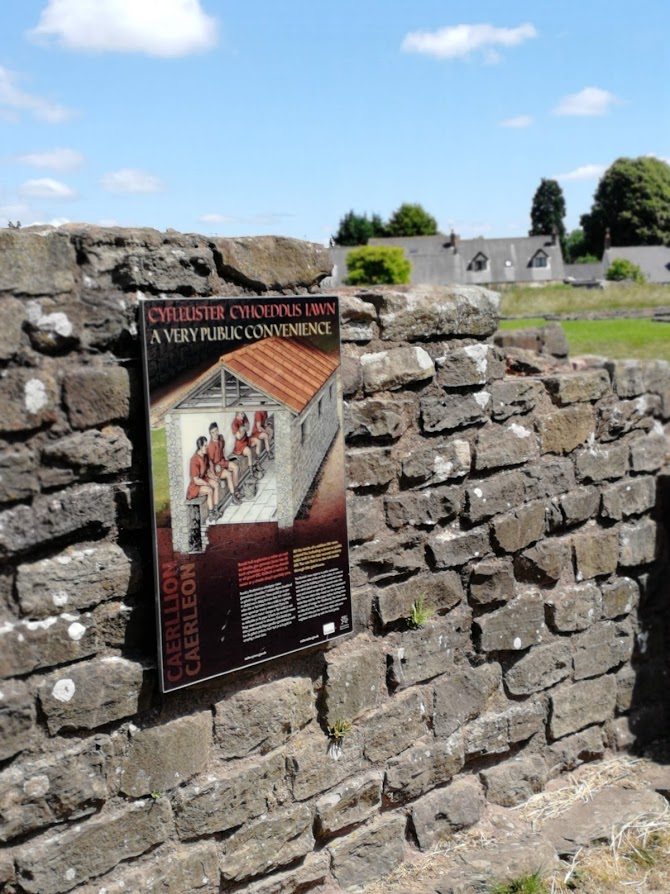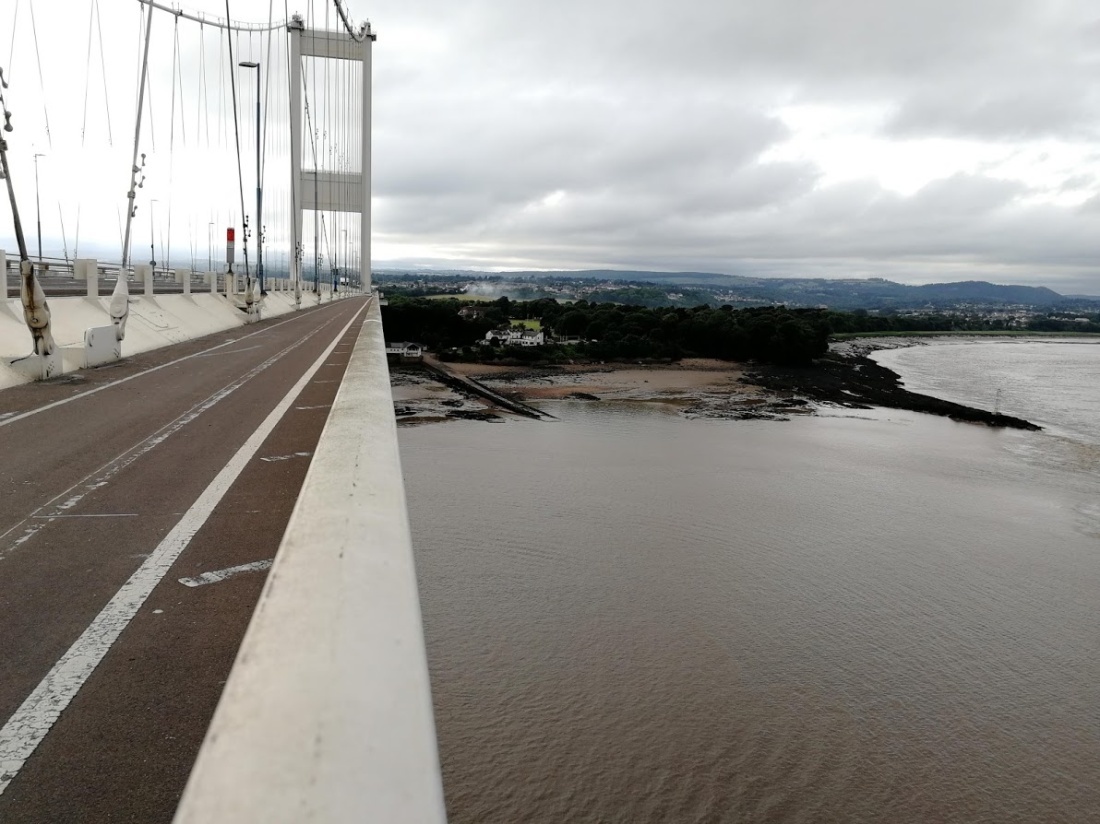
On going down to breakfast, the cheery voice of last night materialised into an enthusiastic sports gear clad thirty year old carrying a football with a seven year old boy in tow and they were shortly off to a juniors’ training session. We had a good chat about sport which turned into one of those “it’s a small world” moments when it turned out that his training had been at Loughborough University while I played for Lutterworth RFC who had an annual fixture with their thirds. They would run us ragged and then, on leaving the field, their players would do forward flips.
He said there was no possibility of my getting anywhere for the night at Swansea; it was fully booked everywhere because of the concert, the few available beds were being offered for £100s of pounds for the night. I had, however, spotted that there was a camp site a couple of miles up the Swansea Valley from the town so booked in there. Route 4 continued west from where I left it so decided to make a short cut across to pick it up later along an old railway line. After about six miles, stopped at a pub to get some supplies and check my route, hiding my bike in the pub garden leaving my helmet over the handlebars. I was the only person in the pub except a small group watching football who left shortly after I arrived. I sat down for a break, had a drink and some nuts, returning to my bike found a pannier disturbed and my helmet gone. I knew that I would not be passing any bike shop but would be able to get one when I arrived at Llanelli the next day.
Found the route and continued, mainly on traffic free paths, until I joined a cycle path running alongside the A48 where the route suddenly left the cycle path and joined a lane which I could see going straight up the hillside and, from the map, then passing behind Margam Castle Estate. This required some thought, it could be that the cycle path, which was now running traffic free along the main road finished, or else there was something spectacular to see if one followed the path. Sustrans have a record for finding such places which annoys cyclists more interested in completing the route than looking at sites.
Decided to follow the route as a result of one of those “I might never be here again” moments and was soon off my bike pushing for what seemed ages until I reached iron gates which I needed to take off the panniers to go through. A rough gravel track then ran westward parallel with the coast and then I realised why it had seemed such a long climb and the reason for the diversion. Emerging from the trees there was an unforgettable view over the Severn Estuary and its islands to Devon and its distant hills. Looking steeply down were the Port Talbot steel works with smoke and steam rising from them looking like a working toy model. It had just been announced that 4,000 jobs were being saved there on an amalgamation of Tata Steel and a foreign company. Had a break and made my way along a rough track, stopping frequently to admire the changing view until another iron gate and off downhill.
Because of developing arthritis in my fingers and thumbs I had arranged to have long levers on my brakes and these now became very useful because it was as steep going down as it had been going up but now, partly, on a track. Some parts were stony, the bike was heavy with its panniers and I skidded and bounced until I reached some tarmac and eventually picked up the cycle path along the road. I then found myself cycling closely by the very smoky steel works which I had recently viewed from above.
Another trick Sustrans have is to take you though housing estates adjoining main roads to avoid conflict with busy traffic but soon after I entered the estate I was hailed by a resident who asked if I was following the bike route and, if so, it was blocked ahead and I would have to go on to the main road which I did and stopped to consult my maps. I was immediately approached by two female locals who enthusiastically asked if they could help. Explained the situation and one with an air of great authority said that it was blocked and gave me very clear directions as to where to turn off and how, after going under a bridge, I would find a car park on the far side of which was the cycle path. The directions turned out to be accurate in getting me to the car park but there was no way through a high wire security fence to the path. Back to the main road and stopped outside a corner shop to look at my maps again when, like magic, one of the young woman appeared from it, followed by the other carrying an open can of lager, who seem not abashed to be told what I had found and gave me another clear set of instructions to get to the path but invited me first to go across the road to a pub to have a drink with them. I made my excuses and left but never found the cycle path.
I continued along the main road when an oasis appeared in the form of a petrol station with a shop. I had only had a couples of bars and some nuts since breakfast and my stomach turned over at the possibilities of food. The shop was closed but there was someone at the night window where a customer was paying for petrol. He wanted something from the shop so the attendant went down a short corridor carefully closing the door behind her through to the shop, collected the item which she passed under the payment window as an excited woman dashed up saying “I just want a bottle of fizzy pop for my grandad, he says he is parched” so I motioned for her to go first. The request puzzled the attendant who could get no clear description so she went into the shop. The pop bottles were mostly on the far side partly hidden by the centre counter and she then held up one by one. They were mostly, rejected or brought round to the front of the shop, pressed against the glass window still to be rejected. The reason became clear: the drinks that service stations sell are exotically designed to attract children and there were none that her grandfather would think were fizzy pop. After some trips the attendant found, in a remote corner, a large bottle of standard lemonade, pressed it against the glass where it was viewed with great suspicion and the two drivers now in the queue and I held our breath, “I suppose so” was the reply. Had no heart to make the drivers wait while I started similar negotiations so beckoned them on and then bought two packs of chicken sandwiches and some bars. Found a quiet corner disturbed only by the local rat who must have smelt the food, devoured one pack and kept the other for supper.
I carried on alongside the main road until I picked up a cycle path which, after a few miles, took me into the outskirts of Swansea where I needed to pick up route 43 along the river Tawe. It took some time to find and turned itself into a narrow dark cycle/pedestrian way made worse by the failing light.
An athletic looking pair came running towards me and I asked if they were on a training run. “No, the Killers” one said, “and there are loads more coming down here” pointing up the path. I put my rather small lights on, and soon they started coming using their phones as torches, my sudden appearance startling them and then turning to amusement when they realised I was harmless. Larger and larger groups started arriving and I could make little progress and they become more and more cheerful and wreathed in fumes of alcohol. Discovered they were coming from the Liberty Stadium, the home of Swansea FC and Ospreys RFC, with a capacity of 21,000, the third largest stadium in Wales. I had been reduced to walking slowly until the path eventually lead me round the Stadium. Eventually got going again towards the camp site which was away from the path a mile or so further up but the satnav on the phone could not cope with the post code and the camp site became a moving shining mirage until I met a couple walking there who invited me to follow them eventually though a gap in the hedge into the site.
It was very late and a notice outside the office directed me to an entertainment centre with ear shattering music. I surprised the barman when I walked up with my bike and the Security Guard was called. The area for tents was in the far reaches of the site so he invited me to follow his car and I reached my fastest speed of the day. He parked so I could put the tent up in his headlights and eventually helped me erect it; he said he preferred to be doing this than throwing the drunks out of the bar which he would soon be doing. Sat in my tent eating my now warm and delicious chicken sandwiches.















